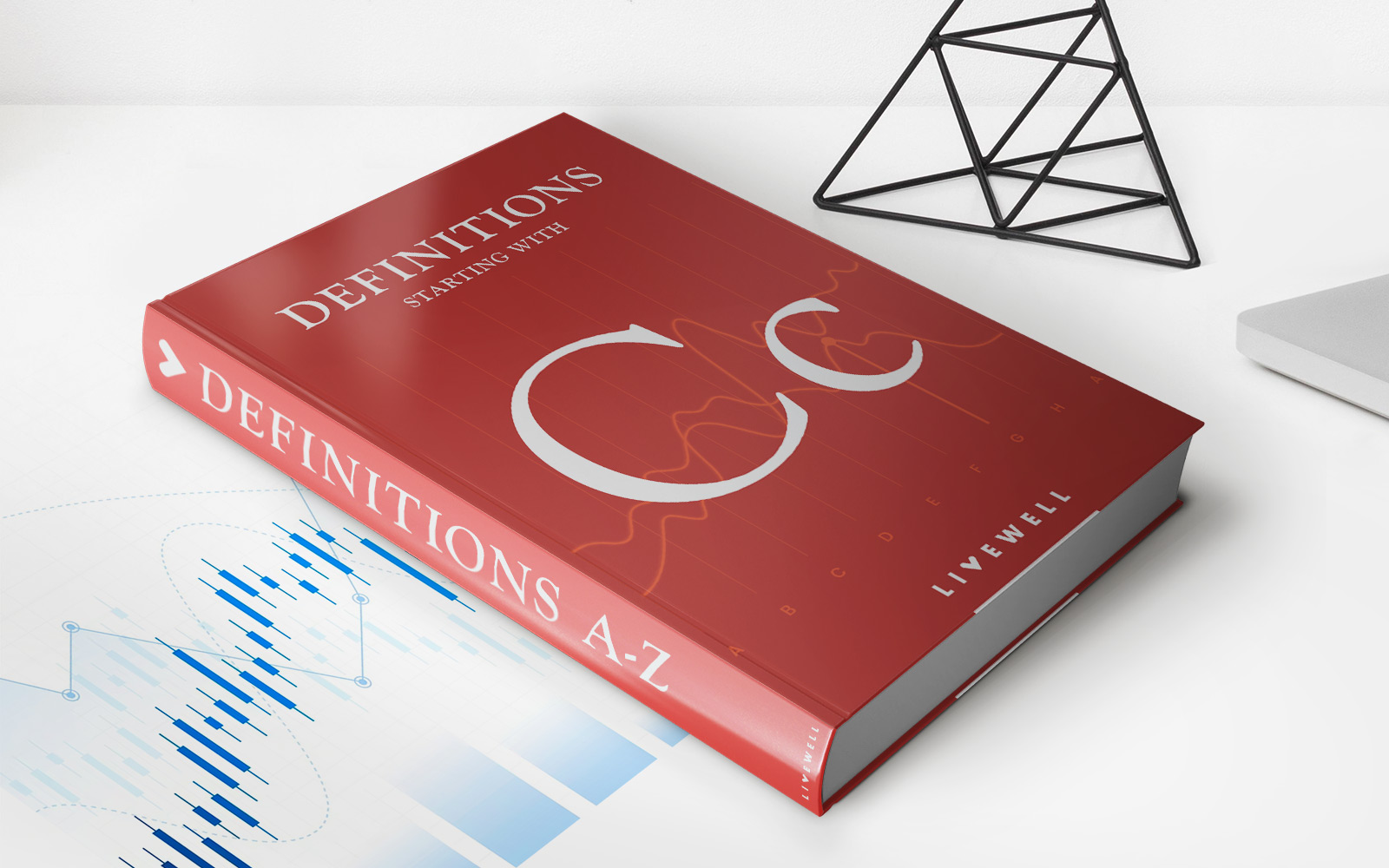

Finance
What Is A Revolving Credit Agreement?
Published: February 29, 2024
Learn about revolving credit agreements in finance, including how they work and their benefits. Understand the flexibility and convenience of revolving credit.
(Many of the links in this article redirect to a specific reviewed product. Your purchase of these products through affiliate links helps to generate commission for LiveWell, at no extra cost. Learn more)
Table of Contents
Introduction
In the realm of finance, businesses often require flexible access to funds to manage their operations, investments, and growth. One financial tool that serves this purpose is a revolving credit agreement. This versatile financial arrangement provides businesses with a line of credit that can be repeatedly accessed and repaid, offering a dynamic solution for managing short-term capital needs.
Revolving credit agreements are akin to a financial safety net, offering businesses the ability to address immediate financial requirements without the need for extensive approval processes for each drawdown. This accessibility and flexibility make revolving credit agreements a valuable resource for businesses seeking to navigate the ebb and flow of their financial demands.
Understanding the intricacies of revolving credit agreements is essential for businesses aiming to optimize their financial strategies. From the key features and benefits to the potential drawbacks and the process of obtaining such an agreement, this article delves into the comprehensive landscape of revolving credit agreements. By exploring these aspects, businesses can gain valuable insights into whether a revolving credit agreement aligns with their financial objectives and operational needs.
Understanding Revolving Credit Agreements
At its core, a revolving credit agreement is a financial arrangement between a lending institution and a business, providing the business with access to a predetermined line of credit. Unlike traditional term loans, which provide a lump sum of capital upfront, revolving credit agreements allow businesses to withdraw funds as needed, up to a specified credit limit. Once funds are withdrawn, the business can repay the borrowed amount, and the repaid funds become available for borrowing again, creating a revolving cycle of credit.
This financial tool offers businesses the flexibility to address short-term financial needs, such as managing cash flow fluctuations, purchasing inventory, or covering operational expenses during lean periods. The revolving nature of the credit line enables businesses to adapt to changing financial circumstances without the constraints of a fixed repayment schedule.
Furthermore, revolving credit agreements often come with a variable interest rate, meaning the cost of borrowing can fluctuate based on market conditions. This dynamic interest structure can impact the overall cost of utilizing the credit line, requiring businesses to stay attuned to interest rate movements and their potential financial implications.
Businesses can utilize revolving credit agreements for various purposes, including funding working capital requirements, seizing growth opportunities, and mitigating unforeseen financial challenges. By understanding the mechanics of revolving credit agreements, businesses can leverage this financial tool to optimize their cash management and financial flexibility, fostering agility in navigating the ever-evolving landscape of business operations.
Key Features of Revolving Credit Agreements
Revolving credit agreements encompass several key features that distinguish them from traditional term loans and other forms of financing. Understanding these features is crucial for businesses evaluating the suitability of revolving credit agreements for their financial needs.
- Flexibility: One of the defining characteristics of revolving credit agreements is their flexibility. Businesses can access funds as needed, up to the specified credit limit, without the constraints of a fixed repayment schedule. This adaptability empowers businesses to address immediate financial requirements without undergoing extensive approval processes for each withdrawal.
- Revolving Structure: As the name suggests, revolving credit agreements operate on a revolving basis. When a business repays the borrowed funds, the repaid amount becomes available for borrowing again. This revolving cycle of credit provides businesses with ongoing access to capital, making it an ideal solution for managing fluctuating financial needs.
- Variable Interest Rates: Many revolving credit agreements feature variable interest rates, which means the cost of borrowing can fluctuate based on market conditions. While this offers the potential for cost savings during periods of low interest rates, it also introduces the risk of increased borrowing costs if interest rates rise.
- Secured or Unsecured: Revolving credit agreements can be either secured or unsecured. Secured credit lines are backed by collateral, providing a level of security for the lender, while unsecured credit lines do not require collateral but may entail stricter eligibility criteria and higher interest rates.
- Renewable Terms: These agreements often feature renewable terms, allowing businesses to extend the credit line after a specified period, subject to the lender’s approval. This renewable aspect provides continuity in access to funding, offering long-term financial support for businesses.
By encompassing these key features, revolving credit agreements offer businesses a dynamic financial tool to manage their short-term capital needs, optimize cash flow, and navigate the ever-changing landscape of business operations.
Advantages and Disadvantages of Revolving Credit Agreements
Revolving credit agreements present businesses with a unique set of advantages and disadvantages, shaping their appeal and potential considerations for prospective borrowers.
Advantages:
- Financial Flexibility: The primary advantage of revolving credit agreements lies in their flexibility. Businesses can access funds on an as-needed basis, enabling them to address short-term financial requirements without being bound by a rigid repayment schedule. This agility is particularly valuable for managing working capital needs and navigating unforeseen expenses.
- Cost-Efficient Access to Capital: Revolving credit agreements provide businesses with cost-efficient access to capital, as interest is typically charged only on the amount borrowed. This cost structure can result in potential savings compared to traditional term loans, where interest accrues on the entire loan amount from the outset.
- Adaptability to Fluctuating Needs: The revolving nature of these credit lines allows businesses to adapt to fluctuating financial needs. Whether it involves seizing growth opportunities, managing seasonal cash flow variations, or addressing unexpected expenses, the flexibility of revolving credit agreements empowers businesses to respond to changing circumstances effectively.
Disadvantages:
- Variable Interest Rates: While the potential for cost savings exists, the variable nature of interest rates introduces the risk of increased borrowing costs if market interest rates rise. Businesses must carefully assess their risk tolerance and financial capabilities to manage potential interest rate fluctuations effectively.
- Potential Over-Reliance on Credit: The accessibility of revolving credit lines may lead to over-reliance on borrowed funds, potentially impacting a business’s financial stability. Prudent financial management and disciplined borrowing practices are essential to mitigate the risks associated with overextending credit utilization.
- Collateral Requirements and Eligibility Criteria: Secured revolving credit agreements may necessitate the provision of collateral, while unsecured credit lines often entail stringent eligibility criteria and higher interest rates. Businesses must evaluate the trade-offs between collateral requirements, eligibility criteria, and associated costs when considering revolving credit options.
By weighing these advantages and disadvantages, businesses can make informed decisions regarding the suitability of revolving credit agreements for their specific financial needs and risk tolerance levels.
How to Obtain a Revolving Credit Agreement
Obtaining a revolving credit agreement involves a series of steps aimed at establishing a mutually beneficial arrangement between the borrowing business and the lending institution. The process encompasses several key considerations and requirements, shaping the path to securing a revolving credit line.
Evaluating Financial Needs:
Prior to pursuing a revolving credit agreement, businesses should conduct a comprehensive assessment of their financial needs and objectives. This evaluation entails identifying the specific purposes for which the credit line will be utilized, determining the optimal credit limit required, and assessing the potential impact of variable interest rates on the overall cost of borrowing.
Choosing a Lending Institution:
Businesses seeking a revolving credit agreement must identify suitable lending institutions that offer these financial products. This involves researching and comparing the terms, interest rates, and eligibility criteria of various lenders to select an institution that aligns with the business’s financial requirements and risk tolerance.
Application and Documentation:
Upon selecting a preferred lending institution, businesses initiate the application process for the revolving credit agreement. This typically involves submitting detailed financial documentation, including financial statements, cash flow projections, and business plans. The completeness and accuracy of these documents play a pivotal role in demonstrating the business’s creditworthiness and repayment capacity.
Negotiation and Approval:
Once the application and documentation are submitted, the lending institution evaluates the business’s creditworthiness, financial stability, and adherence to eligibility criteria. This assessment may involve negotiation on the credit limit, interest rates, and collateral requirements. Upon satisfying the lender’s criteria and reaching mutually agreeable terms, the revolving credit agreement undergoes approval, culminating in the establishment of the credit line.
Utilization and Repayment:
Upon securing a revolving credit agreement, businesses can begin accessing funds as per their financial needs, within the specified credit limit. Prudent utilization and timely repayment of the borrowed funds are essential to maintaining a positive credit relationship with the lending institution and optimizing the benefits of the revolving credit line.
By navigating these steps and considerations, businesses can successfully obtain a revolving credit agreement, empowering them with the financial flexibility and resources to address short-term capital needs and optimize their operational capabilities.
Conclusion
Revolving credit agreements stand as a dynamic financial tool that offers businesses unparalleled flexibility in managing their short-term capital needs. By providing access to a revolving line of credit, these agreements empower businesses to navigate the ever-changing landscape of financial demands, seize growth opportunities, and address operational challenges with agility and adaptability.
The key features of revolving credit agreements, including their flexibility, revolving structure, and variable interest rates, underscore their capacity to cater to diverse financial requirements. Businesses can leverage these features to optimize their cash management, respond to fluctuating needs, and access cost-efficient capital for driving growth and innovation.
While the advantages of revolving credit agreements, such as financial flexibility and cost-efficient access to capital, are compelling, businesses must also consider the potential drawbacks, including variable interest rates and the risk of over-reliance on credit. Prudent financial management and a thorough assessment of risk factors are essential for maximizing the benefits of revolving credit while mitigating associated risks.
Obtaining a revolving credit agreement entails a strategic and meticulous process, encompassing the evaluation of financial needs, selection of a suitable lending institution, meticulous application and documentation, negotiation, and prudent utilization and repayment. By navigating these steps effectively, businesses can establish a mutually beneficial credit arrangement that aligns with their operational objectives and financial aspirations.
In conclusion, revolving credit agreements serve as a valuable resource for businesses seeking to optimize their financial strategies, enhance their operational capabilities, and respond to the dynamic nature of their financial requirements. By understanding the nuances of revolving credit agreements and their implications, businesses can harness the power of financial flexibility and adaptability, driving sustained growth and resilience in today’s competitive business landscape.














